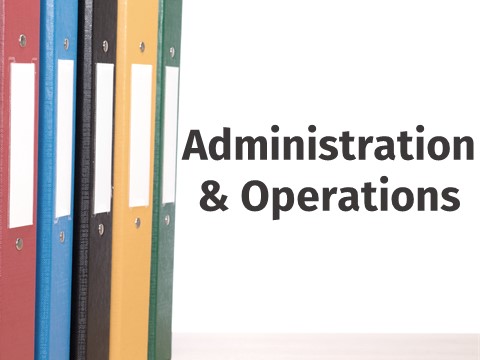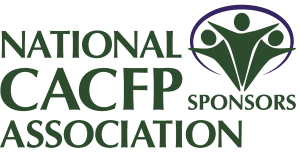Q&A – Reimbursement for Meals and Snacks Served to Young Adults in CACFP
6/7/2021

Summary:
This Q&A provides clarification on additional questions related to section 1107 of the American Rescue Plan (ARP) which authorizes reimbursement for meals and snacks that emergency shelters serve to individuals under the age of 25. USDA’s Food and Nutrition Serving (FNS) issued implementation guidance to State agencies, CACFP-08-2021, on April 9, 2021 (Read Full Memo Here).
Emergency Shelters Participating in CACFP under the American Rescue Plan (ARP):
Eligibility
1. Can emergency shelters participate in CACFP as independent centers or must they participate through a sponsoring organization?
An emergency shelter may participate either as an independent institution or as a facility under a sponsoring organization.
2. Which types of emergency shelters are eligible to participate in CACFP under ARP?
Any public or private nonprofit organization, or its site, that provides temporary shelter and food services to homeless children (i.e., meets the regulatory definition of emergency shelter under 7 CFR 226.2).
3. Are emergency shelters that contract with and are operated by for-profit companies eligible for CACFP?
No, 7 CFR 226.2 defines an emergency shelter as a public or private nonprofit organization.
4. How can emergency shelters that are eligible to participate in CACFP also operate under ARP?
Emergency shelters must have valid agreements with the CACFP State agency to participate. To receive reimbursement, emergency shelters must amend their current agreement or, if they are new to CACFP, apply and sign an agreement to operate the program.
Meal Services
5. Do emergency shelters need to keep separate track of the number of young adults under age 25 receiving meals?
No, emergency shelters do not have to separately track participation of young adults from other meal service recipients. However, they must maintain records of daily attendance and meal counts.
6. How does an emergency shelter document that meals are served to eligible persons?
To support claims for reimbursement, emergency shelters must document that meals have been served to eligible residents under the age of 25, at the time of the meal service.
7. Which types of meals are emergency shelters allowed to claim?
Emergency shelters may claim reimbursement at the free rate for the number and types of meals that are specified in their agreements, which may include a maximum of three meals— breakfast, lunch, and supper—for each eligible resident each day.
8. Which meal pattern requirements apply to young adults under age 25 in an emergency shelter?
Emergency shelters must follow the meal pattern requirements for ages 13 through 18. Larger portions may be served to meet the nutritional needs of growing youths and young adults.
9. Is offer versus serve a meal service option for emergency shelters?
No, emergency shelters are not approved to use offer versus serve.
Reimbursement
10. Can emergency shelters receive retroactive reimbursement for meals and snacks served to individuals under age 25, before FNS issued implementation guidance?
Yes, retroactive reimbursement back to March 11, 2021, is available to emergency shelters.
11. How will retroactive reimbursements be processed?
For emergency shelters that have already submitted a March 2021 claim for reimbursement to the State agency, a revised March 2021 claim for reimbursement may be submitted to the State agency to include the additional meals served to these newly eligible participants.
12. Can emergency shelters that have just submitted CACFP applications to their State agency claim reimbursement for the meals served since March 11, 2021, before they were approved to participate in CACFP?
Yes, State agencies are allowed to establish policies that allow reimbursement for eligible meals served in the calendar month preceding the calendar month in which the CACFP agreement is executed. However, the agreement must be executed before the emergency shelter may receive program payment.
Emergency Shelters that Operate CACFP At-Risk Afterschool Programs:
13. Does ARP apply to at-risk afterschool programs operated by emergency shelters?
Yes, ARP allows participation of emergency shelters that are approved as at-risk centers and provide temporary housing or nonresidential services to young adults.
14. Are at-risk centers required to offer enrichment activities to young adults under age 25?
Yes, at-risk centers must offer programs that include education or enrichment activities.
15. Are at-risk centers that contract with and are operated by for-profit companies eligible for CACFP?
No, 7 CFR 226.2 defines an emergency shelter as a public or private nonprofit organization.
16. Which types of at-risk centers are eligible to participate in CACFP under this provision of ARP?
Eligible at-risk centers must meet the regulatory definition of emergency shelter under 7 CFR 226.2 and qualify as an at-risk center under 7 CFR 226.17a(b).
17. How can at-risk centers operated by emergency shelters participate in CACFP under ARP?
At-risk centers must have valid agreements with the State agency to participate and receive reimbursement. The emergency shelter must amend its current agreement or, if it is new to CACFP, apply and sign an agreement to operate the at-risk afterschool program.
Meal Services
18. How does an at-risk center document that meals are served to eligible persons under ARP?
To support claims for reimbursement under ARP, at-risk centers must document that meals have been served to individuals under the age of 25 at the time of the meal service.
19. Which types of meals are at-risk centers allowed to claim?
At-risk centers must follow the requirements under 7 CFR 226.17a(k), which allows only one at- risk afterschool snack and one at-risk afterschool meal to be claimed at the free rate of reimbursement.
20. Which meal pattern requirements apply to young adults under the age of 25 in an at-risk center?
At-risk centers must follow the meal pattern requirements for ages 13 through 18. Larger portions may be served to meet the nutritional needs of growing youths and young adults.
21. Is offer versus serve a meal service option for at-risk centers?
Yes, offer versus serve is an option during dinner for at-risk centers in CACFP.
Reimbursement
22. Can at-risk centers receive retroactive reimbursement for meals and snacks served to eligible adults, before FNS issue implementation guidance?
Yes, retroactive reimbursement back to March 11, 2021, is available to at-risk centers that have documentation to support the service of reimbursable meals and snacks to young adults under age 25.
23. How will retroactive reimbursements be processed?
For at-risk centers that have already submitted a March 2021 claim for reimbursement to the State agency, a revised March 2021 claim for reimbursement may be submitted to the State agency to include the additional meals served to these newly eligible participants.
24. Can at-risk centers that have just submitted CACFP applications to their State agency claim reimbursement for the meals served since March 11, 2021, before they were approved to participate in CACFP?
Yes, 7 CFR 226.11(a) allows State agencies to establish policies that allow reimbursement for eligible meals served in the calendar month preceding the calendar month in which the CACFP agreement is executed. However, the agreement must be executed before the at-risk center may receive program payment.
